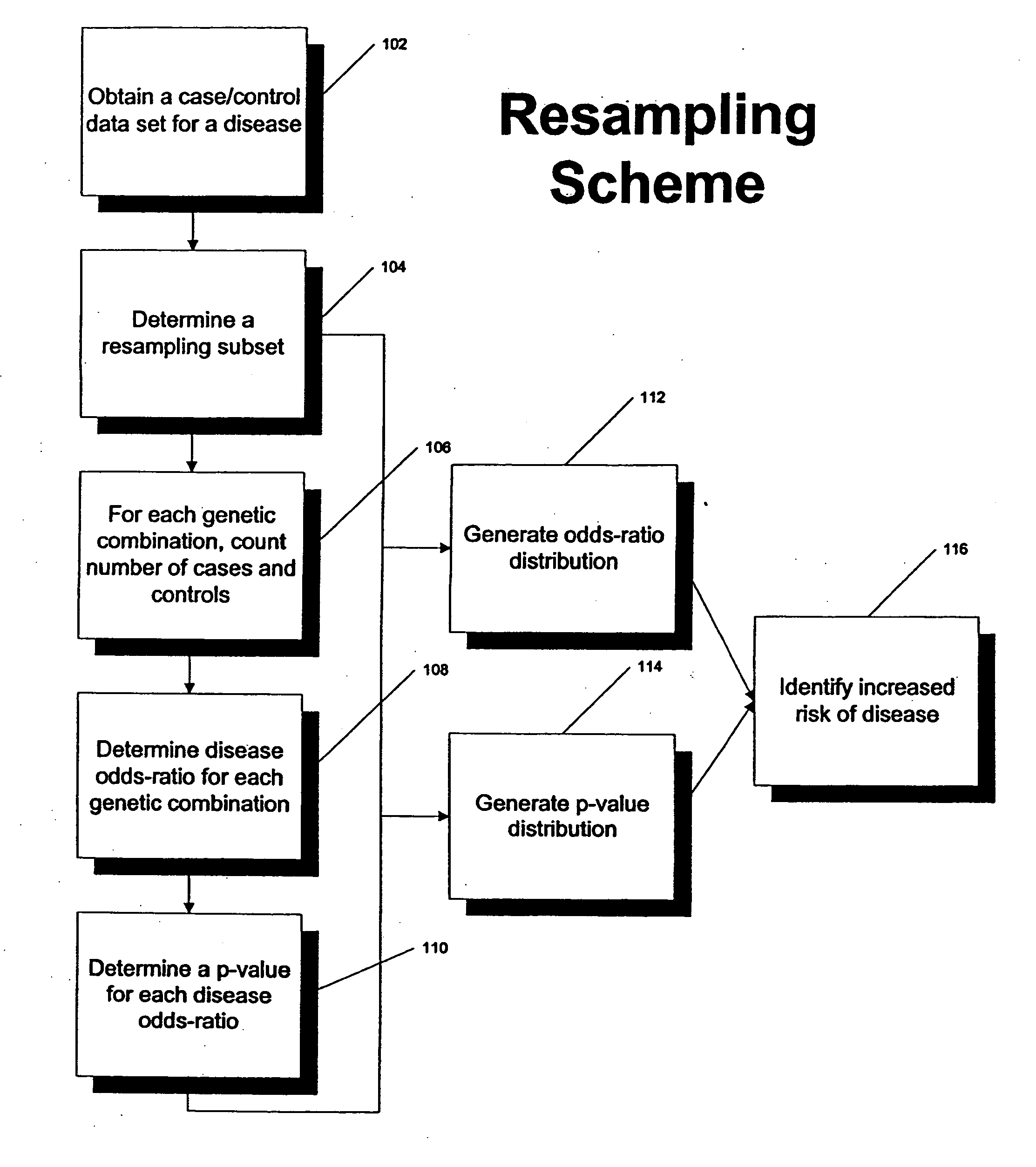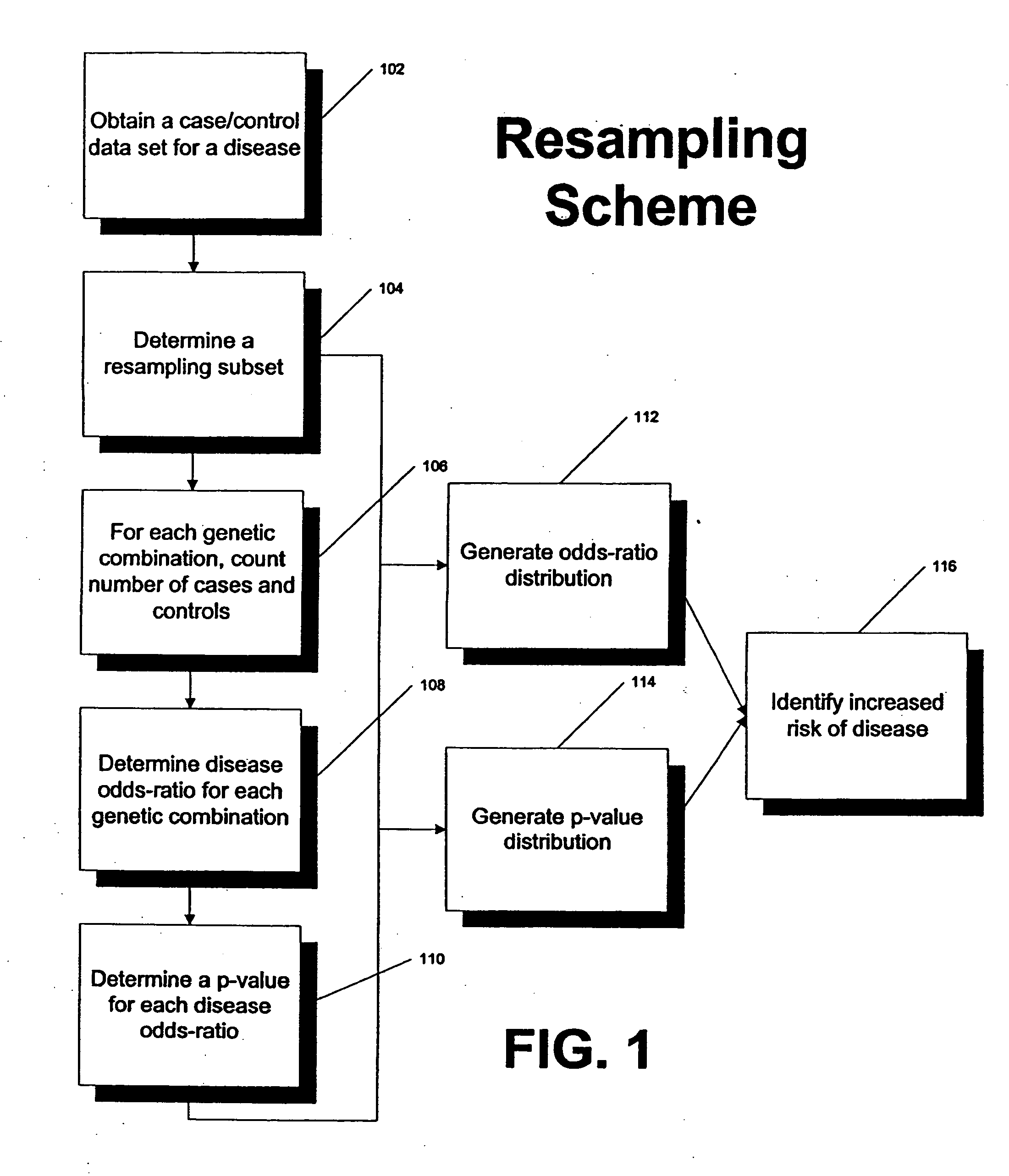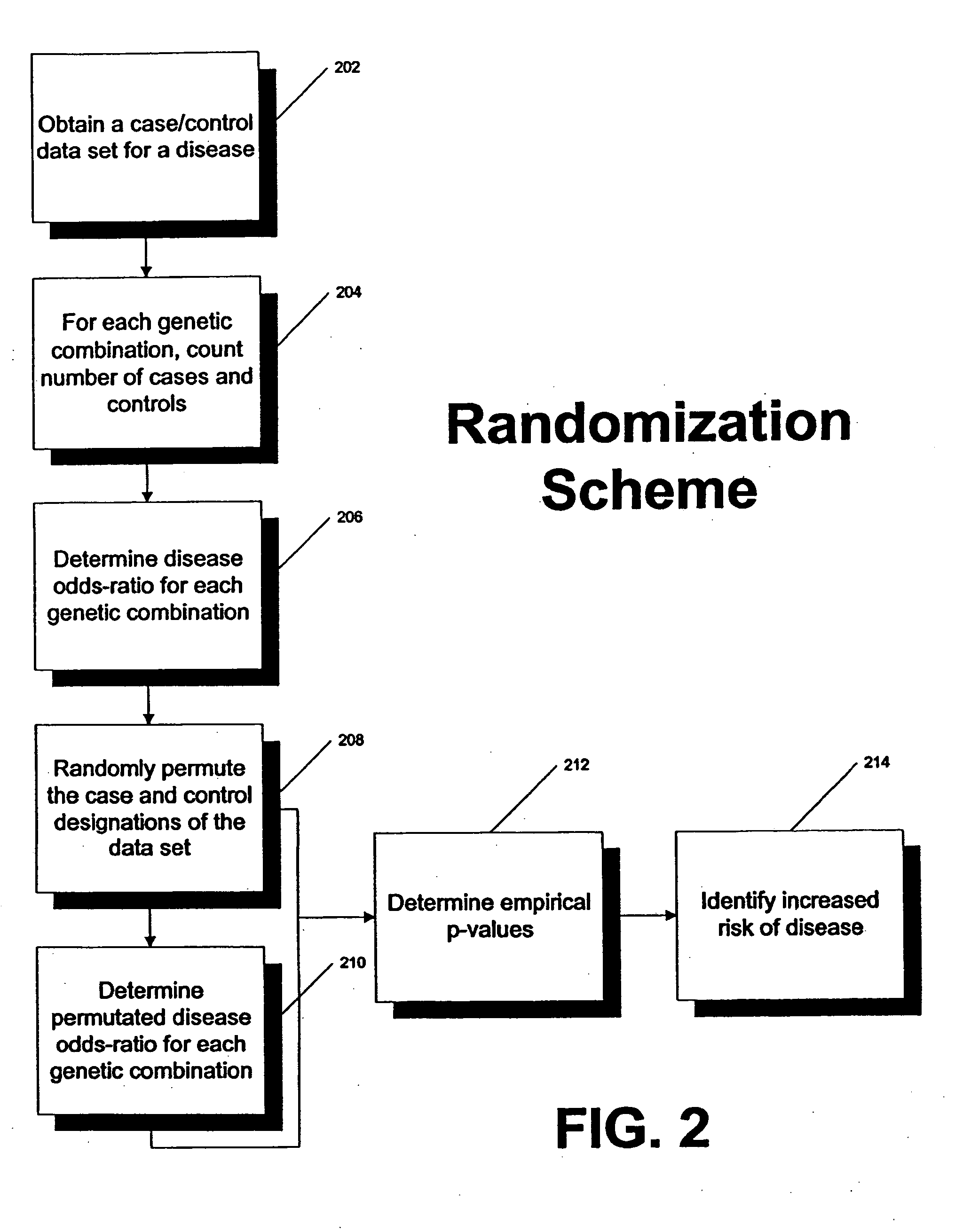Statistically identifying an increased risk for disease
a statistical method and risk technology, applied in the field of life sciences, can solve the problems of poor prognosis of patients regardless of treatment, relatively expensive cancer screening tests, and inability to accurately detect cancer
- Summary
- Abstract
- Description
- Claims
- Application Information
AI Technical Summary
Benefits of technology
Problems solved by technology
Method used
Image
Examples
second embodiment
In a second embodiment, resampling of cases and controls is performed as described before. The allelic frequencies of all polymorphisms are then determined for the resampled dataset for the controls. Hardy-Weinberg modeling is then used to determine the predicted genotype frequencies for the one, two, three or more (as desired) combinations of genes in the controls for the resampled data. The predicted genotype frequencies are then used in comparisons with the observed genotype frequencies in the resampled cases. Odds ratios, p-values and other desired statistics are calculated as described before except that the Hardy-Weinberg modeled genotype frequencies are substituted for observed genotype frequencies in the controls. In this embodiment, the Hard-Weinberg modeling is repeated with each round of resampling.
An essence of the Hardy-Weinberg modeled predictions of genotype frequencies is that they are a more accurate estimate of the true frequencies of relatively rare genotypes in ...
example 1
Techniques of this disclosure provide data analysis strategies to identify combinations of genetic polymorphisms and personal history measures that are associated with varying degrees of risk for developing breast cancer. These strategies are broadly applicable to many similar problems involving the interactions of many genes and many environmental factors in determining risk of developing complex diseases. Risk of developing other types of cancer, heart disease and diabetes may be considered. Additionally, one may use the techniques to predict the efficacies of various medical treatments. In short, these are methods to quantitatively dissect the complex, multifactoral interactions between genes and environmental factors to predict outcomes in medical or biological systems.
At least three main embodiments typify this disclosure:
1. Resampling of data.
2. Generating a null hypothesis for genetic association by randomly assigning data from cases and controls into sets of pseudo-ca...
example 2
The Intergenetics Breast Cancer Cohort is designed as a classic case-control study: ˜1000 cases, ˜4000 controls. The main tool for the analysis is the odds-ratio statistic, which approximates the relative risk, i.e., the increased risk for developing breast cancer among people in the exposed group compared to those who are not (or compared to the average risk in the general population). Exposure in this example is carrying a particular combination of alleles at a set of genes.
The genes being considered typically have two alleles, termed A and B for convenience. With consideration of possible patterns of dominance, this leads to five genotype classes per gene. For a combination of two genes there are then 5×5=25 genotype combinations to consider, 125 for combinations of three genes. Therefore, with a set of twenty genes from which to select three at a time (1140 selections) there are 142,500 three gene combinations to be considered.
A goal of this example is to provide software t...
PUM
 Login to View More
Login to View More Abstract
Description
Claims
Application Information
 Login to View More
Login to View More - R&D
- Intellectual Property
- Life Sciences
- Materials
- Tech Scout
- Unparalleled Data Quality
- Higher Quality Content
- 60% Fewer Hallucinations
Browse by: Latest US Patents, China's latest patents, Technical Efficacy Thesaurus, Application Domain, Technology Topic, Popular Technical Reports.
© 2025 PatSnap. All rights reserved.Legal|Privacy policy|Modern Slavery Act Transparency Statement|Sitemap|About US| Contact US: help@patsnap.com



